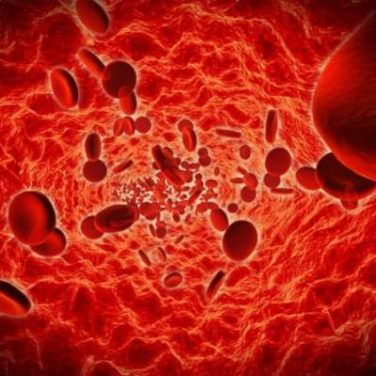AT THE ACR ANNUAL MEETING
BOSTON (FRONTLINE MEDICAL NEWS)– Golimumab was significantly better than placebo at reducing disease activity and inflammation in patients with nonradiographic axial spondyloarthritis, but only among those who were positive for disease on MRI or the inflammation marker C-reactive protein.
In the randomized, double-blind, placebo-controlled GO-AHEAD trial of 198 patients with nonradiographic axial spondyloarthritis (nr-axSpA), 71.1% of patients treated with golimumab (Simponi) achieved the primary endpoint of an ASAS 20 at week 16, compared with 40% of patients on placebo (P < .0001), reported Dr. Joachim Sieper of Charité Medical University in Berlin.
But in a subgroup analysis of patients with normal MRI and C-reactive protein (CRP) levels at baseline, there was no significant difference in ASAS 20 responses at week 16, although the number of patients may have been too small to reveal an effect, Dr. Sieper said.
“There was no difference regarding any adverse event, no difference regarding serious adverse events, and also no difference regarding other adverse events, and there were no deaths in this study,” he said at the annual meeting of the American College of Rheumatology.
Golimumab is a tumor necrosis factor–alpha (TNF-alpha) inhibitor approved in the United States for treatment of moderate to severe rheumatoid arthritis, active psoriatic arthritis, active ankylosing spondylitis, and moderate to severe ulcerative colitis.
The phase III trial was a double-blind, placebo-controlled study in 198 patients with a diagnosis of active axSpA according to Assessment of Spondyloarthritis (ASAS) criteria, a disease duration of less than 5 years since symptom onset, and chronic back pain lasting for at least 3 months.
The patients were randomly assigned to receive either golimumab 50 mg every 4 weeks or placebo via subcutaneous injection. A total of 93 patients assigned to golimumab and 97 assigned to placebo completed 16 weeks of therapy.
The primary endpoint was the percentage of patients achieving an ASAS 20, defined as an improvement of at least 20% and absolute improvement of at least 10 units on a 0-100 scale in three of four domains:
• Patient global assessment (by VAS [visual analog scale] global assessment).
• Pain assessment (the average of VAS total and nocturnal pain scores).
• Function (represented by BASFI [Bath Ankylosing Spondylitis Functional Index]).
• Inflammation (the average score of the last two VASs in the BASDAI [Bath Ankylosing Spondylitis Disease Activity Index], concerning morning stiffness intensity and duration), as well as an absence of deterioration (20% or greater worsening) in the potential remaining domain.
As noted before, golimumab met the primary endpoint among all patients, but in a subanalysis the TNF-alpha inhibitor was significantly better than placebo only among patients with evidence of inflammation on MRI or an elevated CRP at baseline (76.9% vs. 37.5%; P < .0001).
Golimumab was also superior to placebo at week 16 on three secondary endpoints: BASDAI 50 (57.7% vs. 30%; P < .0001), ASAS partial remission (33% vs. 18%; P = .0136), and mean change in Spondyloarthritis Research Consortium of Canada ( SPARCC ) MRI sacroiliac joint score (–5.3 vs. –0.9; P < .0001).
In an intention-to-treat analysis, more patients on placebo had any adverse events after 60 weeks of follow-up (41.2% for golimumab vs. 47% for placebo). Patients on placebo were also more likely to have an event judged by the investigator to be related to the assigned medication (13.4% vs. 17%). There were no serious infections, opportunistic infections, active tuberculosis, malignancies, serious systemic hypersensitivity reactions, or deaths.
The study was sponsored by Merck Sharp & Dohme. Dr. Sieper disclosed receiving honoraria, speaker fees, and/or consultancy payments from the company. Four of the study coauthors are employees of Merck.




